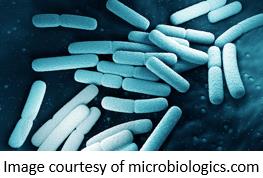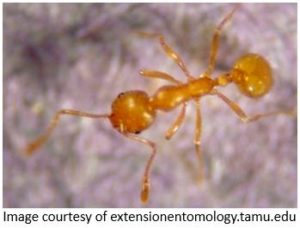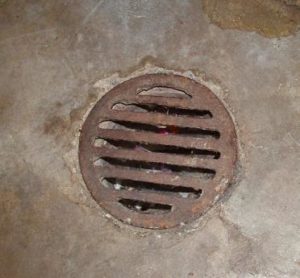Introduction to Cronobacter

Cronobacter is not one of the top concerns in the food industry, however, there have been recent recalls of infant formula due to this naturally occurring germ. Cronobacter sakazakii is a germ found naturally in the environment. These germs can live in dry foods, such as Powdered infant formula, Powdered milk, Herbal teas and Starches.
Cronobacter infections are rare, but they can be deadly in newborns. Infections in infants usually occur in the first days or weeks of life. About two to four cases are reported to CDC every year, but this figure may not reflect the true number of illnesses. That’s because most hospitals and laboratories are not required to report Cronobacter infections to health departments.
Cronobacter germs can cause a dangerous blood infection (sepsis) or make the linings surrounding the brain and spinal cord swell (meningitis). Cronobacter illness in infants will usually start with a fever and poor feeding, excessive crying, or very low energy. Some infants may also have seizures.
You should take an infant with these symptoms to a medical provider as soon as possible. Prevention is essential through handwashing, cleaning, sanitizing, and storing feeding items such as baby bottles and breast pump parts safely. If your baby is fed with formula, consider using liquid formula when possible. Powdered infant formula is not sterile and might have germs in it. Liquid infant formula is made to be sterile (without germs). This means liquid formula should not make your baby sick with Cronobacter infection when you follow the instructions on the container.
Additional Information is available at HERE.
Submitted by: Rich Gibson ACE, CFSQA
The Pharaoh Ant

Order: Hymenoptera Family: Formicidae Genus: Monomorium Species: M. pharaonis
Pharaoh ants are yellow to reddish colored with a dark gaster tip and are almost transparent. The waist (pedicel) has two nodes, and the antennae are 12-segmented with a three-segmented club. All worker ants of this species are about 1/16”
The Pharaoh ant is considered a major nuisance species. They are almost always found within structures and are difficult to eliminate. If disturbed or foraging trails disrupted by the application of contact insecticide treatments, the colony often buds off into several separate colonies, unlike other species which swarm. This species is polygynous, meaning each colony contains many queens, leading to unique caste interactions and colony dynamics. This also allows the colony to fragment into bud colonies quickly. Pharaoh ant nests are located in floor voids, walls and ceilings, and they often infest large buildings. In hospitals, these ants pose a health risk because they can carry infectious bacteria from the warm, moist areas they inhabit.
Because the colony may bud if stressed by an application of an insecticide, or may quit foraging after an application, a false impression of eradication might be given. Baiting is the preferred method of control for pharaoh ants. Several baits should be used to see which one the colony may prefer. Pharaoh ants notoriously use plumbing pipes and electrical wires, therefore baiting in those locations is essential. Each ant trail found could be for a separate ant colony, so baiting each trail and diagramming ant locations is very important in the eradication of pharaoh ants.
Submitted by: Rich Gibson, ACE, CFSQA
Dark-Eyed Fruit Fly

A snack food manufacturer had noticed an increasing number of flying insects near the nut roasters in their production area and contacted the RK Environmental Services (RKE) Regional Operations Manager. A Service Specialist was dispatched to the facility immediately to begin an inspection to determine the source of activity and remedy the concern.
The Service Specialist is very familiar with the location but had never noticed any flying insects during past services or inspections. A thorough investigation was completed with the help of the plant Sanitation Supervisor in addition to a review of archived service and trend reports.
During the inspection of Roaster 1 and 2, adult dark-eyed fruit flies were found resting on adjacent walls, an indicator of activity. The proper identification of this insect was critical in developing an action plan as not all flying insects require the same course of action. Understanding that the larvae of this fruit fly species tend to feed in very wet areas with a buildup of organic sludge as well as in fermenting fruit and vegetable materials helped in determining the source of infestation. The Specialist turned their focus to any place water can settle and allow buildup of organic matter and provide food resources. These areas include floor drains, under and around broken tiles and loose flooring, along edges of floors, separated floor/wall junctures, etc.
Below the roasters, floor drains collect waste water and allow organic material and water to accumulate. Additionally, cracks have developed in the floor around the drain basin further allowing excessive organic build-up.
Improved cleaning is vital in controlling these flies. The RKE representative and Sanitation Supervisor decided this specific cleaning task would be added to the Master Sanitation Schedule. Instruction was also provided on repairing the floor and other materials in poor condition was reviewed with the client. A biological cleaner was used to remove organic buildup in drains and other places. The use of chemicals (pyrethrum) was avoided due to the facility being operational at the time.
The plan of attack was successful, and the area has been free of flying insect activity once all actions were completed.
- Take away tips:
• Insect identification is critical
• There is no substitute for a thorough inspection
• Effective sanitation is key to an IPM program
Submitted by: Christopher Lazo
Regional Operations Manager
RK Environmental Services, LLC






